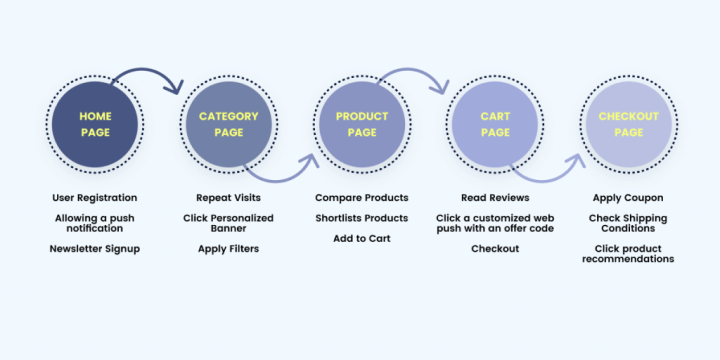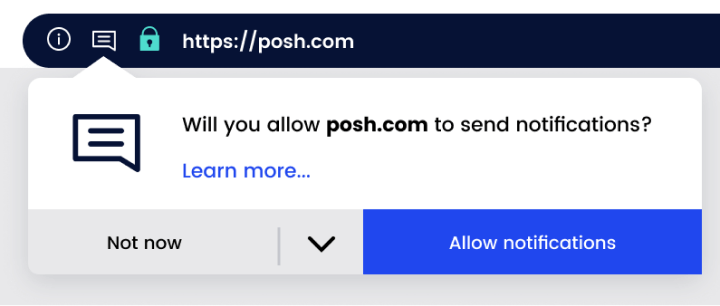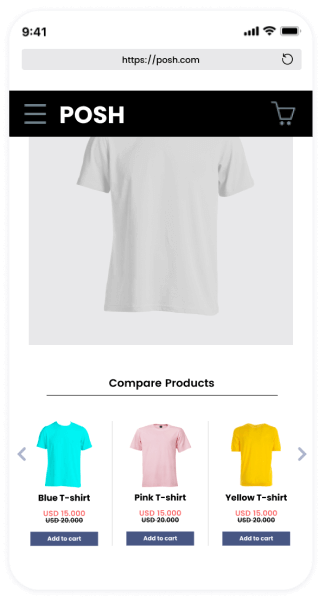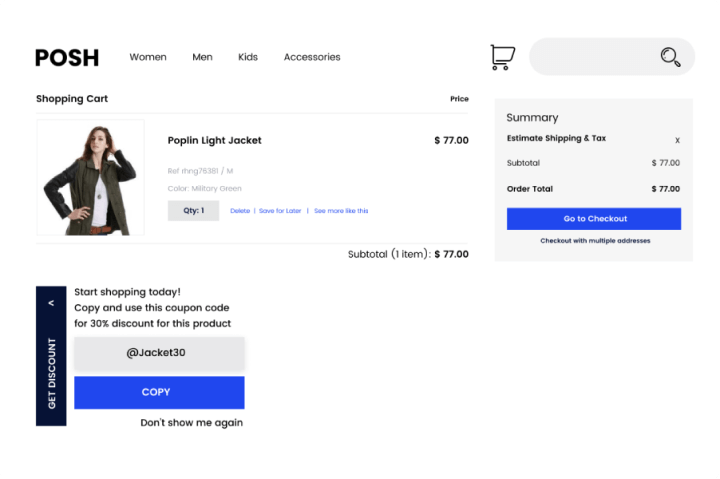 Chris Baldwin
Chris Baldwin
Aug 10, 2020
 Chris Baldwin
Chris Baldwin
Aug 10, 2020
Marketing is all about reaching, engaging, educating and entertaining people and understanding their unique needs or wants. If you get this right, you can create a strong brand and drive revenue for your business.That’s why marketers need to closely track buyer journeys through every stage of the sales funnel to drive conversions. However it’s also important to analyze the conversions that push a prospect from one step to the next. This often ignored funnel information can provide valuable insights about the effectiveness of your marketing investment.
Macro vs Micro Conversions
Micro Conversions in eCommerce
A Typical Micro to Macro Conversion Funnel
How Do You Leverage Micro Conversions?
How Micro Conversions Contribute to Revenue & ROI
Before You Go
People rarely buy the first time they find out about a new brand, product or service. It takes a lot of effort to cater to the smaller moments of truth to keep delighting and building trust with your prospective customers. So to get a complete picture of your marketing efforts, you need to analyze conversions from both micro and macro perspectives. Let’s start by defining both:
Macro Conversions: Final conversion event performed by the customer that directly contributes to the revenue. For example, a user purchasing one of the products on your eCommerce store.
Micro Conversions: The smaller steps that your customers take that may not have an immediate effect on revenue but ultimately leads to the final conversion. For example, a user subscribing to your email newsletter.
In simple terms, micro conversions are low-hanging fruits – events that guide your users to the end goal, the macro conversions. The primary goal of any business is to generate revenue by increasing sales, so all marketers out there measure final conversion metrics. However, many marketers ignore the fact that the final conversion is rarely a standalone event but rather the result of a series of actions that are equally important. An unattended micro-conversion or a break in the funnel is surely going to drag your end conversions and revenue.
For an eCommerce business, the ultimate macro conversion is ordering a product. However a user taking the typical linear journey from [home page > category page > product page > add to cart > checkout > product purchase] is rarely the case. Most times, prospective customers undertake several nonlinear steps before coming back to the linear buying funnel. These nonlinear steps are essentially micro-conversions that are crucial events that need to be measured. Given below is a basic flowchart list of micro conversions for an eCommerce user journey:
HOME PAGE
CATEGORY PAGE
PRODUCT PAGE
CART PAGE
CHECKOUT PAGE

We have already seen a list of micro conversions in eCommerce. The infographic below explains how a typical micro to macro conversion funnel works with a practical journey flow.
1.HOME > User receives a web push request and enables it

2. CATEGORY > Clicks a personalized promotional banner

3. PRODUCT> Compares one product vs other brands, selects one product but abandons the browser session

4. CART > The user gets a personalized trigger push with last visited product at a time he is more likely to click

5. CHECKOUT > User applies the coupon code to complete the purchase

We’ve already seen how micro conversions work with real-life examples. We can summarize the micro-journey tracking activities into 5 basic steps:
As a marketer, you can follow the above steps to make sure you have a robust micro-conversion tracking for your business. These steps are industry agnostic, therefore any marketer irrespective of their domain can micro track to achieve better conversions. All you need is the right platform or tool to easily and speedily go live with micro event setups.
Now that we have seen how effective micro conversions lead into macro conversions, it’s also important to analyze their direct impact on revenue. The micro focus definitely makes you invest more effort on nudging users to next micro actions and guiding them throughout their purchase journey. Most of these micro steps require little or no investment other than a platform which helps you leverage ready-to-use shopping triggers and purchase-inducing templates. Segmenting = users based on their likelihood to purchase or churn, lifecycle stages, lifetime values or interest clusters further enhances the overall user experience and in turn, your revenue.
Micro conversions indirectly boost your ROI as well. Just focusing on final conversions vs. costs can be the wrong way to go, if you have a major segment of users stuck in the funnel as you did not nudge them enough. Many of these customers are not yet lost but need additional micro-pushes. You can easily tap into this massive opportunity to increase sales with micro pushes with no additional customer acquisition cost.
Micro conversions are often the most overlooked KPIs in marketing. Analyzing micro conversions helps you test and optimize marketing efforts, so you can keep converting prospects.. Measuring and optimizing your funnel for micro conversions helps you generate additional revenue with the same marketing budget and improves customer experience. All you need is a well-defined micro conversion funnel along with a platform to implement it effectively using action-oriented triggers and ready-to-use micro-conversion templates.
Insiders’ Growth Management Platform is the perfect platform to improve your micro conversion capabilities with AI-powered conversion templates. Request your personalized demo today.
Is there a last-ditch strategy to retain such users? Exit-intent overlay is a trusted strategy you can fall back on. In essence, an exit-intent overlay works by identifying users who are likely to leave your website and engaging them with a relevant and personalized message, providing an incentive to stay back and complete their journey.

Written by
Chris Baldwin
Chris is an award-winning marketing leader with more than 12 years experience in the marketing and customer experience space. As VP of Marketing, Brand and Communications, Chris is responsible for Insider's brand strategy, and overseeing the global marketing team. Fun fact: Chris recently attended a clay-making workshop to make his own coffee cup…let's just say that he shouldn't give up the day job just yet.